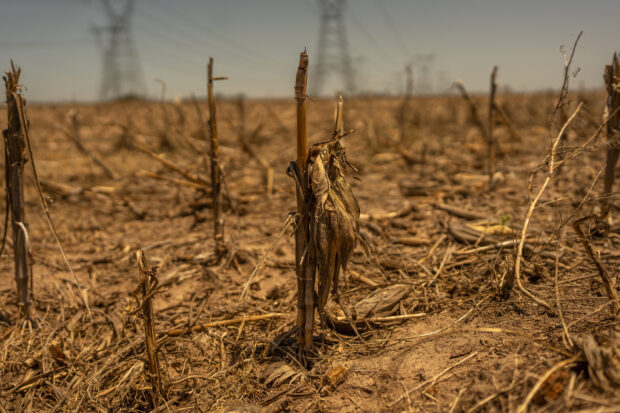Severe drought conditions have helped fuel the Los Angeles wildfires. But a recent study, published in the journal Nature, comes with a warning: Climate change is making catastrophic, multiyear “megadroughts” much worse around the world.
Droughts are relative — a drought in normally rainy Seattle, for example, might register as an unusually wet period in a drier climate such as Phoenix, Arizona. But they can throw ecosystems out of whack, sometimes in dangerous ways.
“That’s what we see right now in California,” said Dirk Nikolaus Karger, a senior researcher at Swiss Federal Institute WSL and a paper author. “Over time, the vegetation dries out, and we have increased fire frequency, and houses burn down. In other areas, we will have agricultural failures.”
Related story: 5 Emerging Risks to Watch: Falling Space Junk, Megadroughts, Bioplastic Toxins
The fires in California are being driven by only eight months with little rainfall. While climate change is contributing to more erratic precipitation in the western US, the new paper takes a global view of droughts that last years. The researchers were motivated to do so after Karger and co-author Francesca Pellicciotti spent time in Chile, which is in the midst of a drought that began in 2010.
“The consequences were devastating, from ecosystems to agriculture,” said Pellicciotti, a professor at the Institute of Science and Technology Austria. The drought has led to intermittent water rationing, including in Santiago, the nation’s capital, as well as disruptions in mining, a key part of the Chilean economy. In 2021 and 2022, Antofagasta, the London-based Chilean multinational, said it was forced to cut output because of the drought. In September, Google said it was halting plans to build a large data center due to water woes.
To find out how many other places might have experienced similar megadroughts, researchers looked at precipitation and vegetation data. They also looked at spatial data to see how much territory droughts impacted.
They found that over the past 40 years, megadroughts hit every continent but Antarctica. Mongolia, southeastern Australia and the western US were among the regions with the highest density of severe multi-year drought events. The longest drought in their research, though, was one in the eastern Congo basin that lasted a decade. It covered 576,924 square miles (1,494,226 kilometers squared), an area roughly twice the size of Texas.
The researchers also found that climate change is driving an uptick in the areas experiencing a multi-year drought.
“The extent at which these droughts are increasing in area per year is the size of Switzerland, roughly,” said Liangzhi Chen, a postdoctoral researcher at Swiss Federal Institute WSL and the lead author of the study.
As megadroughts expand their reach, so does the damage they are capable of causing. Worldwide, droughts push five times more people to migrate than floods. Dry spells are responsible for shaving more than half a percent off of GDP in low- and middle-income countries on average, according to a World Bank analysis. And as the climate warms, the problem is only likely to get worse.
Photograph: A drought-affected corn field in the town of Serodino, Santa Fe province, Argentina, on Thursday, Nov. 9, 2023. Photo credit: Sebastian Lopez Brach/Bloomberg





















 Bankers Readying U.S. IPOs at ‘Overwhelming’ Pace Ahead of 2026
Bankers Readying U.S. IPOs at ‘Overwhelming’ Pace Ahead of 2026  Viewpoint: Mapping Evolving Regulatory Terrain for MGAs, MGUs and Other DUAEs
Viewpoint: Mapping Evolving Regulatory Terrain for MGAs, MGUs and Other DUAEs  Examining 5 Key Factors Fueling MGA Growth—and Emerging Challenges Ahead
Examining 5 Key Factors Fueling MGA Growth—and Emerging Challenges Ahead  Truckers Who Fail English Tests Are Pulled Off Roads in Crackdown
Truckers Who Fail English Tests Are Pulled Off Roads in Crackdown 